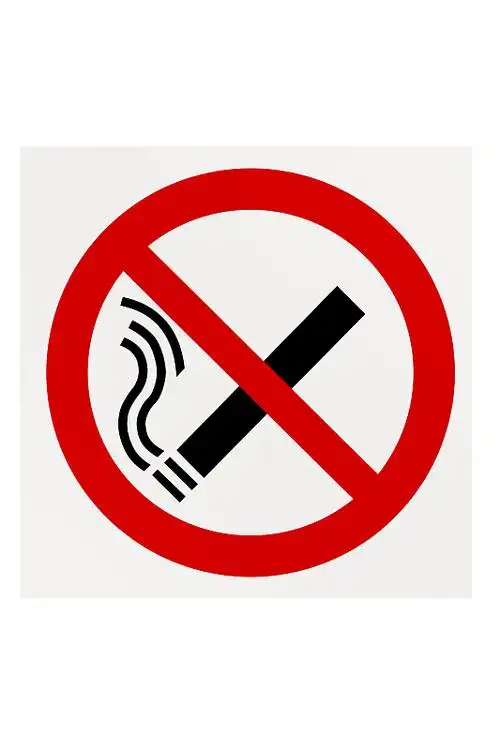The Unseen Drag: How Smoking Slows Your Body's Return to Peak Oxygen Efficiency
We all know the feeling. You’ve just crushed a workout—a long run, a challenging cycling session, or an intense circuit training class. Your muscles are tired, but you feel that deep, satisfying fatigue that comes from a genuine effort. In the hours and days that follow, your body is hard at work, repairing, rebuilding, and adapting to make you stronger and fitter for next time. This critical period is known as recovery, and its efficiency is the bedrock of athletic progress.
For a smoker who exercises, however, this recovery process faces a silent, internal saboteur. While the immediate effects of smoking on lung capacity and endurance are well-documented, a more insidious impact lies in how smoking dramatically reduces recovery time, specifically for one of the most critical indicators of fitness: your maximum oxygen uptake, or VO2 max.
Let's dive into the intricate dance of exercise and recovery, and uncover exactly how the chemicals in cigarette smoke throw a wrench in the gears of your body's most fundamental physiological processes.
Understanding the Gold Standard: VO2 Max and Why It Matters
Before we can understand the disruption, we must first appreciate the marvel that is VO2 max. Think of your body as a high-performance engine. VO2 max is the measurement of your engine's maximum capacity to use oxygen. More technically, it's the maximum volume of oxygen your body can utilize per minute during intense exercise, relative to your body weight (ml/kg/min).
During a tough workout, your muscles demand a tremendous amount of energy. To produce this energy aerobically (with oxygen), they need a steady, rich supply of oxygen. Your VO2 max is the upper limit of this delivery and utilization system. It involves your lungs' ability to absorb oxygen, your heart's power to pump oxygen-rich blood, your blood vessels' capacity to transport it, and your muscles' skill at extracting and using that oxygen to create fuel.
After an intense session that pushes your VO2 max, this system is stressed. It's not just your muscles that are fatigued; your entire cardiopulmonary system has been challenged. The "recovery" of your VO2 max isn't just about feeling less out of breath; it's about your body restoring its baseline efficiency in this complex oxygen transport chain. A swift return to your pre-exercise VO2 max level is crucial for consistent training and performance improvement. A delayed recovery means you start your next workout with a compromised system, leading to diminished performance and a higher risk of overtraining.
The Assault on Oxygen Transport: Where Smoke Does Its Dirty Work
Cigarette smoke contains over 7,000 chemicals, including carbon monoxide and nicotine, which directly and brutally attack every link in the oxygen transport chain, thereby impairing post-exercise VO2 max recovery.
-
The Carbon Monoxide Coup: Imagine a train system designed to carry passengers (oxygen) to their destinations (muscles). Carbon monoxide (CO) is a hijacker that not only has a much stronger affinity for hemoglobin—the passenger car in your red blood cells—but also kicks the legitimate passengers (oxygen) off. When you smoke, you flood your system with CO, creating carboxyhemoglobin. This significantly reduces the blood's oxygen-carrying capacity. After a hard workout, your body is desperate to deliver oxygen to repair damaged tissues and replenish energy stores. With a significant portion of your "trains" commandeered by CO, the delivery of this vital recovery resource is severely hampered. Your heart has to work harder to pump this oxygen-poor blood, and your muscles are left waiting for the supplies they need to rebuild. This direct reduction in blood oxygen carrying capacity is a primary reason for sluggish VO2 max recovery in smokers.
-
Nicotine's Double-Edged Sword: Nicotine is a potent stimulant. It increases heart rate and constricts blood vessels (vasoconstriction). While this might provide a fleeting sense of alertness, it's a disaster for exercise recovery. Vasoconstriction raises blood pressure and reduces peripheral blood flow. This means the very vessels that need to dilate to carry more blood and oxygen to your recovering limbs are instead being squeezed shut. This effect creates a double-whammy: not only is your blood carrying less oxygen (thanks to CO), but the pathways for that blood are also narrowed. This severely impedes oxygen delivery to recovering muscles, slowing down the repair of micro-tears and the clearance of metabolic waste products like lactic acid. The result is a prolonged feeling of fatigue and a much slower return to your baseline VO2 max.
The Inflammatory Onslaught and Structural Damage
The damage doesn't stop with transport. Smoking creates a state of chronic, systemic inflammation in the body.
- Oxidative Stress: Cigarette smoke is packed with free radicals, unstable molecules that cause cellular damage. Exercise itself produces free radicals, but a healthy body has antioxidant systems to neutralize them. Smoking overwhelms this system. The resulting oxidative stress damages cell membranes, including those in the lungs and blood vessels, further hindering post-exercise cardiopulmonary function.
- Lung Tissue Damage and Cilia Paralysis: The delicate alveoli (air sacs) in your lungs, where gas exchange occurs, can be destroyed by the tar and irritants in smoke, leading to emphysema over time. Furthermore, smoke paralyzes and destroys the cilia—tiny hair-like structures that sweep mucus and debris out of your airways. This leads to a buildup of toxins and a higher susceptibility to infections, creating a less efficient environment for oxygen to enter the bloodstream in the first place. This slowed VO2 max recovery after intense workouts is partly due to this foundational damage to the initial gateway of oxygen.
The Real-World Impact: What This Means for Your Fitness Journey

You might be thinking, "I smoke after my workout, not before, so it shouldn't affect me." This is a dangerous misconception. The effects of smoking on your cardiovascular system are cumulative and persistent. The carbon monoxide can linger in your bloodstream for hours. The inflammatory state is constant. Your body is never operating at its full, smoke-free potential.
For the smoking athlete, this translates to:
- Needing more time between high-intensity sessions to feel fully recovered.
- Hitting a performance plateau much sooner because each subsequent workout is started from a deficient baseline.
- Experiencing more pronounced and prolonged muscle soreness (DOMS) due to inadequate oxygen for repair.
- An overall feeling that your fitness progress is an uphill battle, which can severely impact motivation.
The Silver Lining: Reversibility and the Power of Quitting
The human body possesses a remarkable capacity for healing. The negative impact of smoking on aerobic capacity restoration is not always a life sentence. The moment you stop smoking, your body begins to repair itself.
- Within 12 hours, carbon monoxide levels in your blood drop to normal.
- Within a few weeks, your lung function begins to improve, and cilia start to regrow, improving your ability to clear mucus and fight infection.
- Over several months, inflammation decreases, and the constant assault on your blood vessels ceases.
This healing directly translates to improved recovery. As your oxygen transport system is restored, your body becomes exponentially more efficient at delivering the necessary resources to your muscles post-exercise. The delay in VO2 max normalization post-exercise begins to shorten. Many former smokers report dramatic improvements in their workout recovery, energy levels, and overall performance within just a few months of quitting.
In conclusion, the choice to smoke is, in essence, a choice to apply a permanent brake on your athletic potential. It directly undermines the very processes that make exercise beneficial by crippling your body's ability to recover its peak oxygen-using efficiency. Every cigarette widens the gap between the work you put in and the results you get out. Understanding this deep, physiological connection empowers you to make informed decisions about your health and fitness. For anyone serious about their performance, prioritizing the health of their oxygen transport system is non-negotiable, and that journey begins with a single, smoke-free breath.












